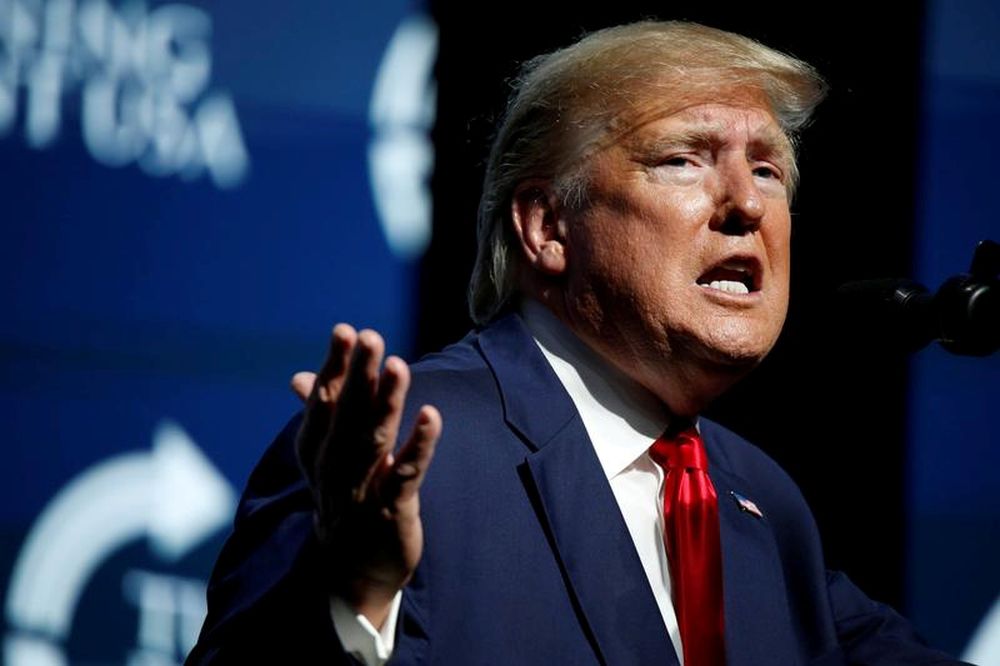WASHINGTON, Sept 19 — A fierce political battle shaped up over the future of the US Supreme Court today, with President Donald Trump saying he would quickly name a successor to liberal Justice Ruth Bader Ginsburg, a move that would tip the court further to the right.
“We were put in this position of power and importance to make decisions for the people who so proudly elected us, the most important of which has long been considered to be the selection of United States Supreme Court Justices,” Trump said on Twitter. “We have this obligation, without delay!”
Ginsburg, the senior liberal justice, died last night at age 87 of complications from metastatic pancreatic cancer after 27 years on the court. Her death gives Trump, who is seeking re-election on Nov. 3, a chance to expand the court’s conservative majority to 6-3 at a time of a gaping political divide in America.
Democrats are still seething over the Republican Senate’s refusal to act on Democratic President Barack Obama’s Supreme Court nominee, Merrick Garland, in 2016 after conservative Justice Antonin Scalia died 10 months before that election. McConnell in 2016 said the Senate should not act on a court nominee during an election year, a stance he has since reversed.
Despite that anger, Democrats have little chance of blocking Trump’s pick. His fellow Republicans control 53 of the Senate’s 100 seats and Senate Majority Leader Mitch McConnell, who has made confirmation of Trump’s federal judicial nominees a top priority, said the chamber would vote on any Trump nominee.
Obama himself on Saturday called on Senate Republicans to honor what he called that “invented” 2016 principle.
“A basic principle of the law — and of everyday fairness — is that we apply rules with consistency, and not based on what’s convenient or advantageous in the moment,” Obama said in a statement posted online. “The rule of law, the legitimacy of our courts, the fundamental workings of our democracy all depend on that basic principle.”
Even before Ginsburg’s death, Trump had made public a list of potential nominees.
Conservative activists for years have sought to get enough votes on the Supreme Court to overturn the landmark 1973 Roe v. Wade ruling that legalized abortion nationwide. During the 2016 campaign, Trump promised to appoint justices who would overturn that decision. But the court in July, even with its conservative majority, struck down a restrictive Louisiana abortion law on a 5-4 vote.
The two justices already appointed by Trump were Neil Gorsuch in 2017 and Brett Kavanaugh in 2018. Kavanaugh’s confirmation process was particularly heated, as he faced accusations by a California university professor, Christine Blasey Ford, that he had sexually assaulted her in 1982 when the two were high school students in Maryland. Kavanaugh angrily denied those accusations and was narrowly confirmed.
Republicans risk the possibility of liberals embracing more radical proposals should Trump replace Ginsburg but Democrats win November’s election, with some activists on the left suggesting even before Ginsburg’s death that the number of justices on the court should be expanded to counter Trump’s appointees.
Confirmation votes could also put more pressure on incumbent Republican senators in highly competitive election races, including Maine’s Susan Collins and Arizona’s Martha McSally, at a time when Democrats are eying a chance to win control of that chamber. Senator Lisa Murkowski of Alaska also could play a pivotal role.
Many court-watchers expect Trump to attempt to replace Ginsburg with a woman. One possible contender on Trump’s list is Amy Coney Barrett, a conservative judge on the Chicago-based 7th US Circuit Court of Appeals who was under consideration in 2018 before Trump picked Kavanaugh. — Reuters






















